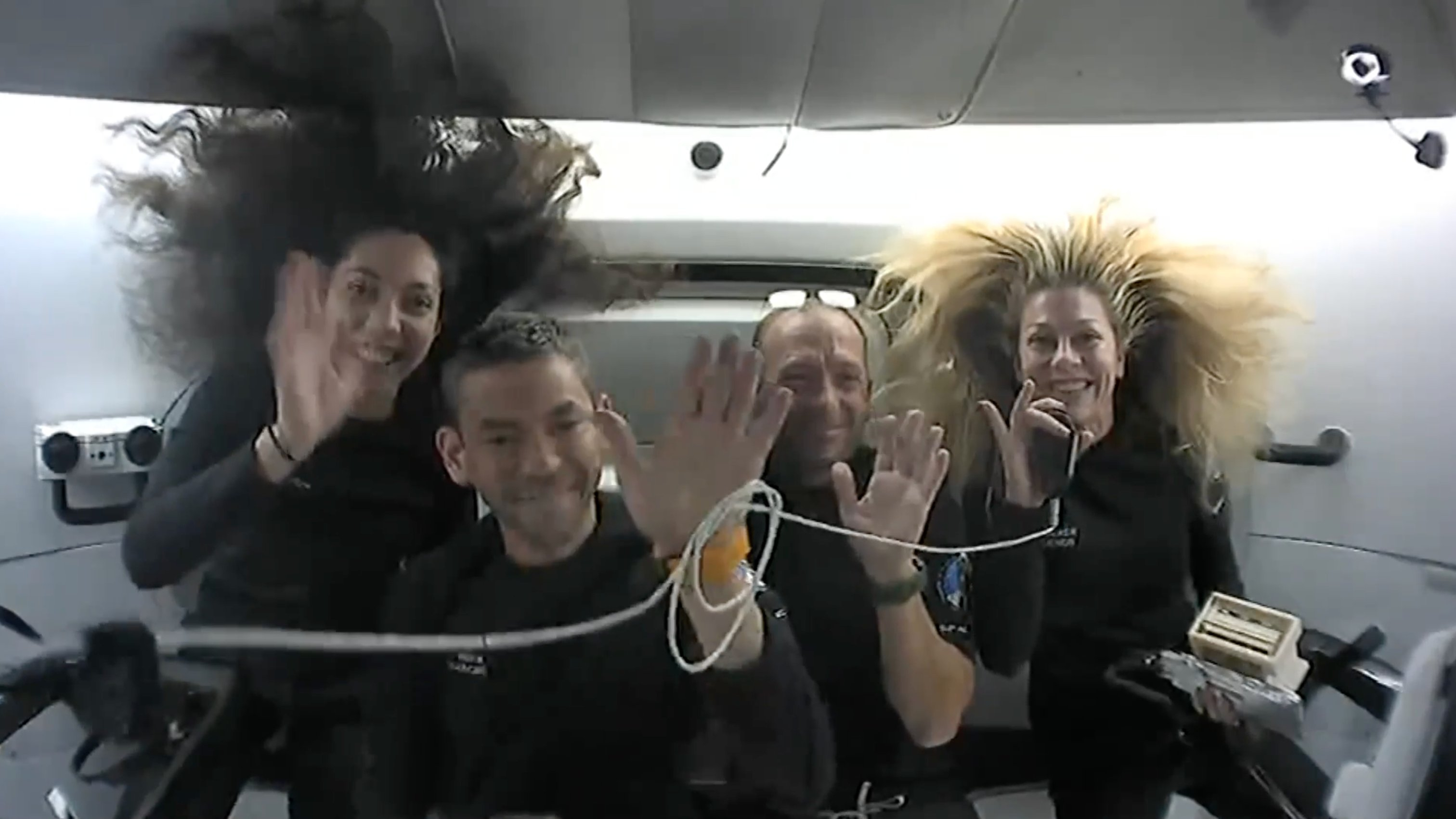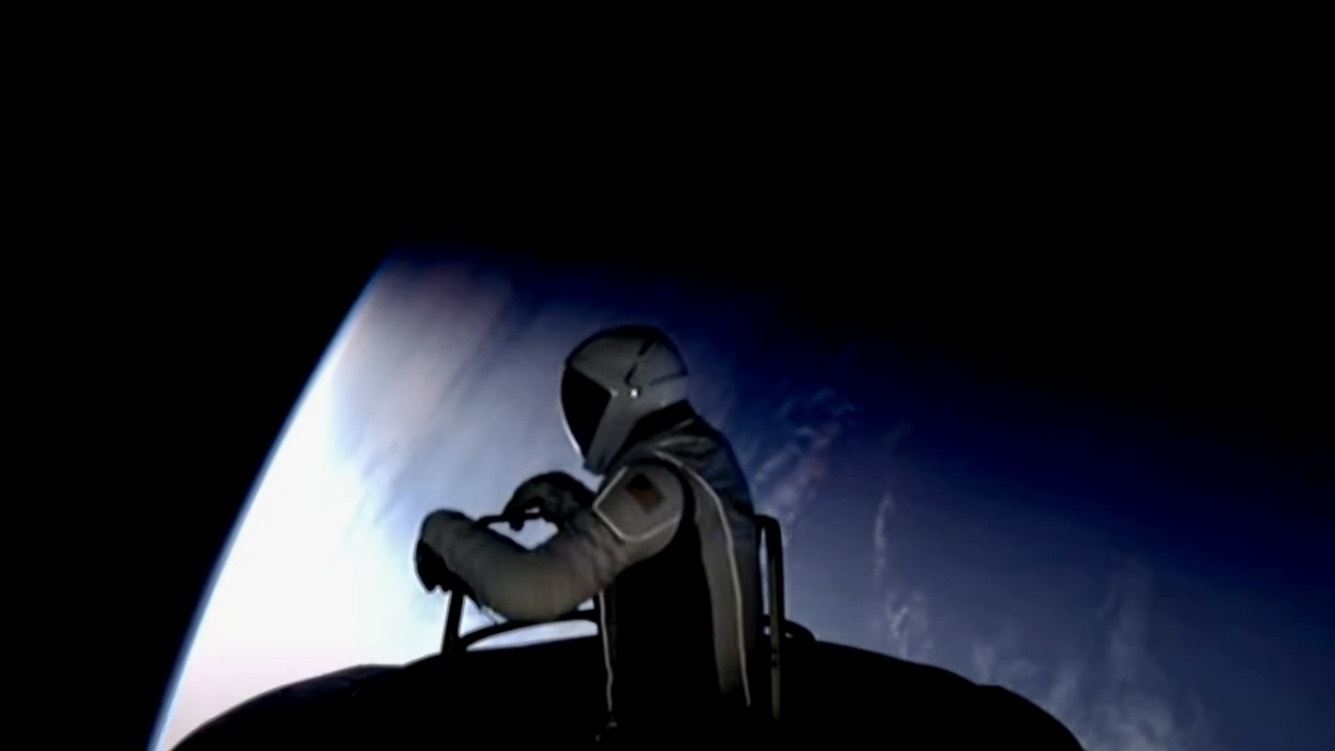SpaceX's private Polaris Dawn astronauts will return to Earth early Sunday. Here's how to watch live online
Like every other major milestone of the Polaris Dawn mission, you're going to have to be awake in the middle of the night to catch the action.

After an eventful five days in space, which included the first-ever commercial spacewalk, the private astronaut crew of Polaris Dawn is returning to Earth.
If all goes according to plan, the SpaceX Dragon capsule Resilience — orbital home to the four-person over the past five days — will splash down in the Gulf of Mexico off the coast of Dry Tortugas, Florida on Sunday, Sept. 15, at about 3:36 a.m. EDT (0736 GMT), SpaceX said in an update. The landing will mark the end of Polaris Dawn, a mission to demonstrate the mobility and functionality of SpaceX's new extravehicular activity (EVA) spacesuit, and the completion of history's first spacewalk by a private citizen.
Coverage of Polaris Dawn's return will begin about an hour before landing at 2:36 a.m. EDT (0636 GMT) and will be available on SpaceX's X account page and on the SpaceX Polaris Dawn mission page.
Polaris Dawn launched on a SpaceX Falcon 9 rocket early Tuesday (Sept. 10) from NASA's Kennedy Space Center in Florida. Leading the mission (and funding it) is billionaire philanthropist Jared Isaacman. Isaacman also commanded SpaceX's Inspiration4 in 2021, the first all-civilian flight to space, which also flew on SpaceX's Resilience Dragon capsule. This time, Isaacman was joined by mission pilot Scott "Kidd" Poteet, and two SpaceX engineers, Sarah Gillis and Anna Menon, as mission specialists.
Related: SpaceX Polaris Dawn astronauts perform historic 1st private spacewalk in orbit (video)
As was done with the Inspiration4 mission, Polaris Dawn has been raising money for St. Jude Children's Research Hospital. Inspiration4 raised over $250 million.
Aboard Resilience, the crew's initial orbits during the mission's first days flew their spacecraft through portions of the Van Allen radiation belt, as far as 870 miles (1,400 km) from Earth — an altitude never before reached by a woman, making Gillis and Menon the farthest-flown female astronauts in history, and farther than any crewed mission since Apollo 17, in 1972.
Get the Space.com Newsletter
Breaking space news, the latest updates on rocket launches, skywatching events and more!
While in their high, elliptical orbit, the Polaris Dawn crew completed several experiments to study the novel microgravity environment's effects on the human body, before lowering their altitude in preparation for their mission's most critical demonstration — their historic spacewalk.

The Polaris Dawn spacewalk came on day three of the crew's mission, and lasted about two hours. Floating up through Crew Dragon's top hatch in turns, Isaacman and Gillis performed a series of mobility tests to assess SpaceX's new spacesuits. Using a specially designed mobility handhold structure, dubbed "Skywalker" by SpaceX engineers, Isaacman and Gillis each spent several minutes mostly out of Dragon's hatch, taking in views of the Earth below as they completed their EVA suit checks.
Early this morning via @Starlink space lasers, the Polaris Dawn crew chatted with SpaceX teams over coffee and donuts 🍩🛰️ pic.twitter.com/nZ9v0VSyr5September 14, 2024
In addition to their spacewalk and other experiments, the Polaris Dawn crew notched another milestone by using SpaceX's Starlink satellite network to send data and content from orbit. Amidst their busy schedule, the crew were able to post to social media, and send videos, photos, tributes and even a musical performance back down to Earth.
On Saturday (Sept. 14), they spoke via a Starlink video connection directly with SpaceX employees and guests during a 40-minute space-to-ground call that appeared to go smoothly, with no connection issues even as their Dragon capsule fired its thrusters 16 times, SpaceX said in a X update.
The crew's launch to space was originally scheduled for Aug. 26, but was delayed several days due to weather conditions at the mission's landing zones.
With only limited provisions aboard for their five days on orbit, and no chance of rendezvousing with another vessel to resupply, such as a hub like the International Space Station, favorable conditions at Polaris Dawn's ocean splashdown recovery are mission critical.
Join our Space Forums to keep talking space on the latest missions, night sky and more! And if you have a news tip, correction or comment, let us know at: community@space.com.

Josh Dinner is the Staff Writer for Spaceflight at Space.com. He is a writer and photographer with a passion for science and space exploration, and has been working the space beat since 2016. Josh has covered the evolution of NASA's commercial spaceflight partnerships and crewed missions from the Space Coast, as well as NASA science missions and more. He also enjoys building 1:144-scale model rockets and human-flown spacecraft. Find some of Josh's launch photography on Instagram and his website, and follow him on X, where he mostly posts in haiku.









